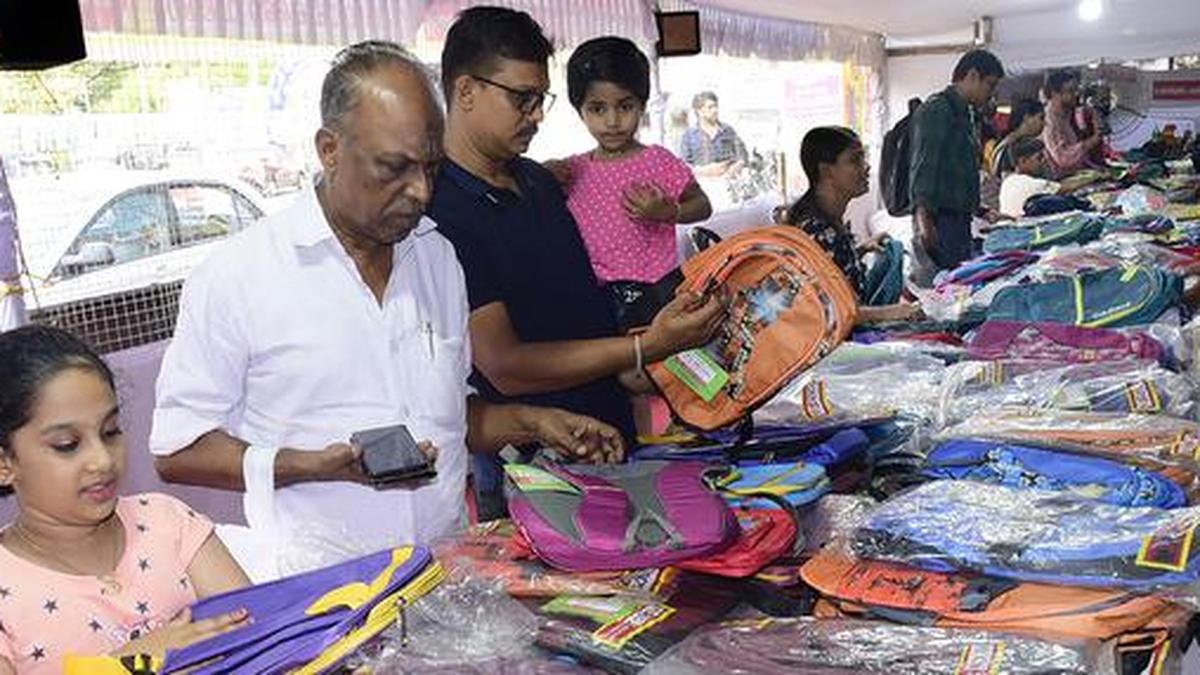By Shishir Sinha
Copyright thehindubusinessline

Ball point pens and fountain pens, school bags and printed books will all attract Goods & Services Tax at 18 per cent, the rate notification for goods by the Central Board of Indirect Taxes & Customs (CBIC), issued on Wednesday, revealed.
The notification is based on the recommendations of the GST Council at its meeting on September 3. Now, the 28 States and 3 Union Territories are expected to notify the rates, to ensure that the new rates are in place from September 22. The new rate chart for around 1,200 kinds of goods has been presented in 7 schedules. Experts say that industry will now have to focus on execution.
Based on the rate chart, ball point pens, felt tipped and other porous-tipped pens and markers, fountain pens, stylo graph pens and other pens will continue to attract 18 per cent GST (9 per cent CGST and 9 per cent SGST). However, GST on pencils (including propelling or sliding pencils), crayons, pastels, drawing charcoals, writing or drawing chalk and tailors’ chalk, and chalk sticks has been lowered to NIL from 12 per cent.
Along with fountain pens, school bags (school satchels), trunks, suitcases, vanity-cases, executive-cases, brief-cases, spectacle cases, binocular cases, camera cases, musical instrument cases, gun cases, holsters and similar containers and travel bags, are placed in the 18 per cent rate category.
Meanwhile, there are some issues related to printed books. The rate chart places uncoated paper, a key input for printed books, in the 18 per cent category. Industry sources and tax experts confirmed that while such paper to be used for exercise books, graph books, laboratory note books and notebooks will be exempted, there is no mention of printed books in the list of exempted items. This means 18 per cent GST would be levied on uncoated paper and paper boards used for printed books, which may raise the price of such books, apprehended industry sources.
Implementation of new rates
Experts said with the publication of two sets of frequently asked questions (FAQ) and rate notifications, it was time for industry to focus on implementation. “It is imperative for industries to align their ERP systems, pricing decisions and supply chains. This strategic alignment is critical to ensure smooth implementation and, crucially, to guarantee that the benefits of this rate rationalisation are effectively passed on to the end- consumer,” said Saurabh Agarwal, Tax Partner, EY India.
Echoing the same sentiment, Adarsh Somani, Partner at Economic Laws Practice, said the rate notification reflects the policy direction communicated earlier and reaffirms commitment to transparency, consistency, and timely implementation. “This step ensures that all formalities are now complete, allowing the business focus to be purely on execution going forward,” he said.
Mahesh Jaising, Partner at Deloitte India, feels the clear announcement for new rates effective September 22, along with product wise details & HSN, give businesses the clarity and lead time needed to assess system updates, undertake credit evaluations, and make necessary supply chain adjustments. “With the rate and exemption notifications now formally issued, the same changes have been codified into law — providing a definitive legal basis for taxpayers to confirm and implement the reforms with confidence,” he said.
Published on September 17, 2025



